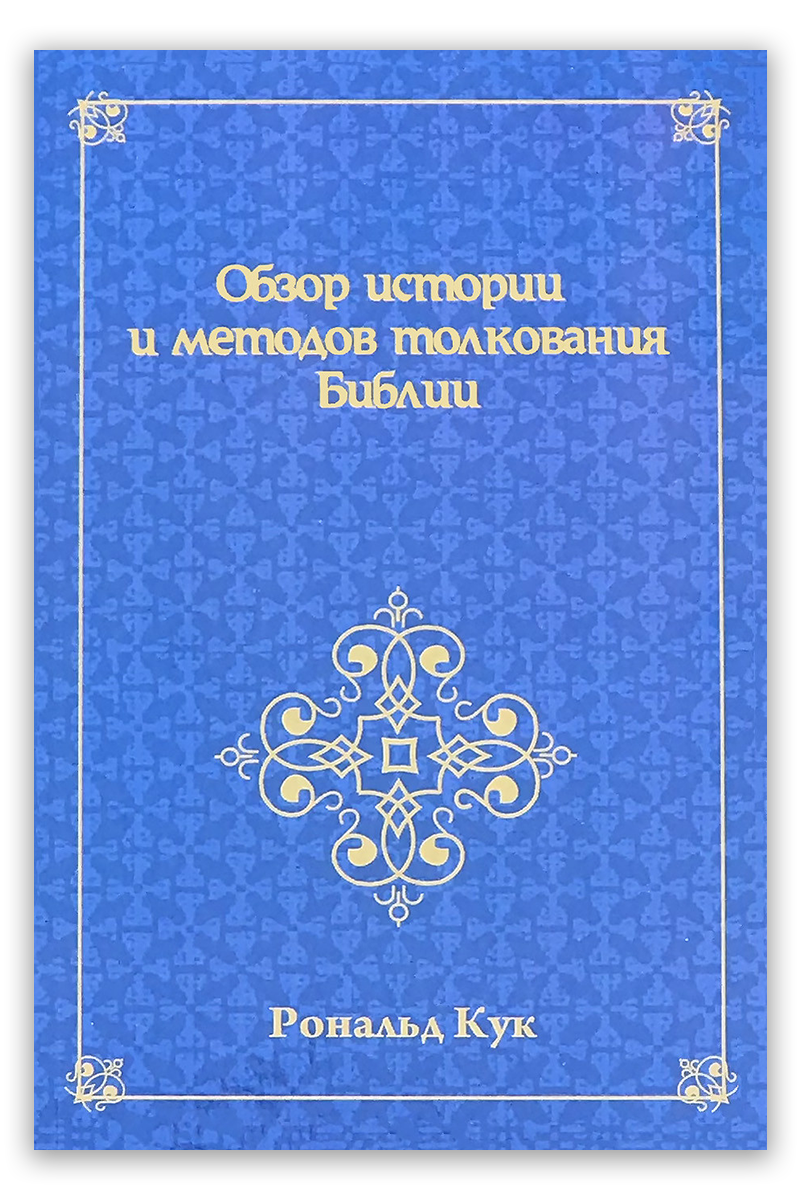
Ronald Cook is the president, professor of theology, biblical language, church history and the Bible at Trinity College (Manahath School of Theology), a higher school of theology (California).
-

Overview of the history and methods of interpretation of the Bible
Author: Ronald CookCategoryDescriptionContentAuthorDetailsAs far as we know, not much has been written about the history of Bible interpretation. Probably, the only work written on this topic is the work of Frederick V. Farrar (Frederic W. Farrar) "History of Interpretation" (History of Interpretation). However, Farrar's work is of little use to the modern reader, as it is full of lengthy quotations in Latin, and Latin is not as widely used today as it used to be. Even for students of theological schools, this work is not easy to read, since it also contains many excerpts from texts in Greek, German, French, and Hebrew, and in order to understand them, serious professional training is required. Farrar gives an overview of exegesis from the days of Ezra to the beginning of the twentieth century.
Read morePart 1 - Historical overview
Introduction
1. The importance of the history of interpretation
2. Seven main schools of interpretation
2.1. Antiquity
2.2. Alexandria school
2.3. Patristic exegesis
2.3.1. A literal and realistic school
A. Tertullian
V. Cyprian
2.3.2. Allegorical school
A. Origen
B. Jerome
2.3.3. Historical and grammar school
A. Feodor Mopsuestiyskyi
B. Chrysostom
2.3.4. Augustine
2.4. Scholastic exegesis
2.4.1. What prevented the interpretation of the Bible in this era
A. Abelard
B. Peter Lombardsky
C. Followers of Hugo Saint-Victorsky
2.4.2. Some disadvantages of scholastic exegesis
2.4.3. Renaissance
A. Nikolay Lyrsky
B. Erasmus of Rotterdam
2.4.4. Truth casts out delusion
2.5. Hermeneutics of the reformers
A. Martin Luther
B.Jean Calvin
2.5.1. Significance of the Reformation for exegesis
2.5.2. The importance of studying hermeneutics
2.5.3. Orthodoxy
2.6. The period after the Reformation
2.6.1. Eighteenth century
2.7. The modern era (from the 19th century to the present day)
A. Richard Chenevix Trench
B. Ethelbert Bullinger
2.7.1. Contemporary books on interpretation
Part 2 - Rules of interpretation
1. Our main basic principles
2. The importance of interpretation
3. A word of caution
4. Basic rules of interpretation
5. Explanation of the basic rules of interpretation
6. Rules concerning specific areas of interpretation: prototypes, symbols and prophecies
6.1. Symbols
6.1.1. Symbolism and numerical value
6.1.2. Symbolism and meaning of color
6.2. Prophecies
7. The importance of understanding figurative expressions
7.1. Learning figurative language
7.2. The most important are figurative expressions, or physical figures
7.2.1. Figures of speech of comparison
7.2.2. Substitution figures of speech (substitutions)
7.2.3. Figures of speech linking words
7.2.4. Exaggeration figures of speech
7.2.5. Other figures of speech and idioms
8. Stages of interpretation of a text or a biblical passage

Ronald Cook is the president, professor of theology, biblical language, church history and the Bible at Trinity College (Manahath School of Theology), a higher school of theology (California).
Author Ronald CookVendor ТюльпанISBN 978-966-2110-14-12Year 2009Cover SoftPages count 238Language RussianWeight 220 gSize 135 x 200 x 15QuantityPrice ₴81.00dOverview of the history and methods of i...
Regular price ₴81.00 UAHRegular priceUnit price / per


















